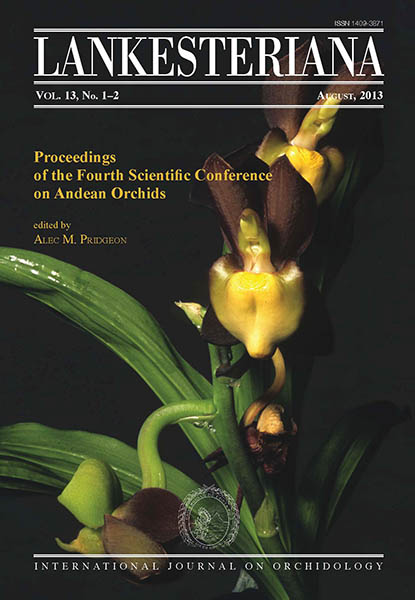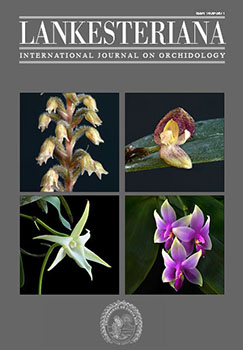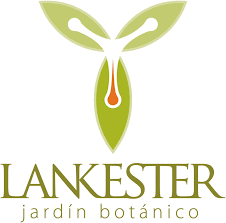Pollination of slipper orchids (cypripedioideae): a review
DOI:
https://doi.org/10.15517/lank.v0i0.11539Palabras clave:
cypripedium, mexipedium, phragmipedium, paphiopedilum, selenipediumResumen
Cypripedioideae (five genera; ca. 176 species) are widespread in temperate and tropical Asia and America. About a quarter (42) of the species have been studied to determine their pollinators and/or breeding systems. All flowers are one-way traps pollinated by insects of particular types and size. Slipper orchids are selfcompatible and pollinated by deceit. Most Cypripedium species are pollinated by bees, whereas some smallerflowered species are pollinated by flies, and a few are pollinated by both. Most bee-pollinated Cypripedium species appear to be generalized food mimics. The fly-pollinated species have evolved diverse pollination systems that utilize a variety of flies as pollen vectors, including fruit flies, dung flies, and a fungal spore-eating hoverfly (Syrphidae). Most species of the tropical Asian Paphiopedilum and tropical American Phragmipedium are pollinated by hoverflies; flowers of many species in both genera have aphid-like spots that attract gravid female hoverflies that normally lay their eggs in aphid colonies. The more brightly colored Paphiopedilum micranthum and Phragmipedium besseae are pollinated by Hymenoptera. Autogamy is limited but occurs most frequently in Phragmipedium species. About two-thirds of the insect-pollinated slipper orchids (25/37) have evolved highly specialized flowers that are pollinated by a single pollinator or several pollinator species in the same genus. Species belonging to the same taxonomic section usually have the same pollination system. The deceit-pollination system of Cypripedioideae appears to have evolved early in diversification of Orchidaceae.Descargas
Los datos de descargas todavía no están disponibles.
Descargas
Cómo citar
Pemberton, R. W. (2013). Pollination of slipper orchids (cypripedioideae): a review. Lankesteriana: International Journal on Orchidology, 13(1-2). https://doi.org/10.15517/lank.v0i0.11539
Número
Sección
Artículos
Licencia
Conforme con las Políticas de Acceso Abierto promovidas por la Universidad de Costa Rica, los derechos de autor de todos los artículos publicados en Lankesteriana se encuentran bajo una licencia Creative Commons y pueden ser descargados gratuitamente. Los derechos de autor y de publicación pertenecen a la revista bajo la licencia CC BY-NC-ND 3.0 CR.
Before the publication of the materials submitted by the author(s) in LANKESTERIANA, the author(s) hereby assign all rights in the article to the Lankester Botanical Garden.





